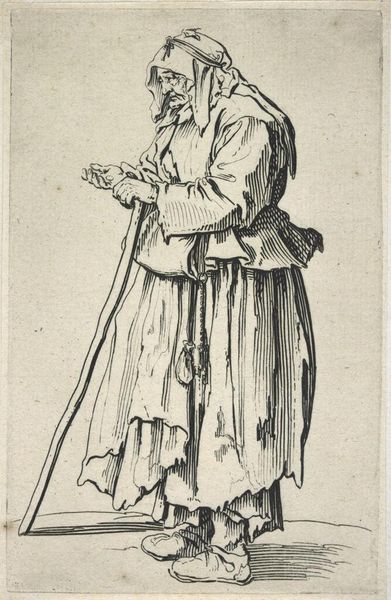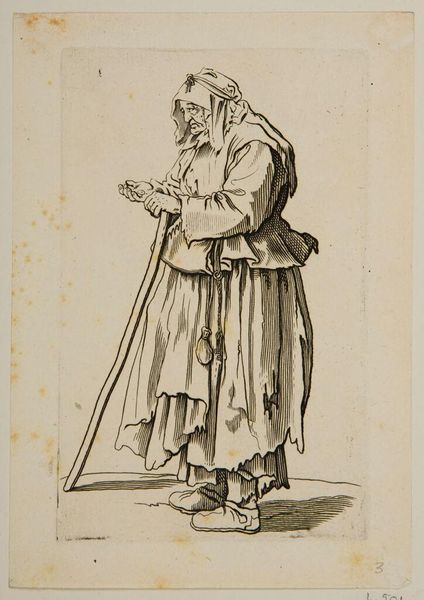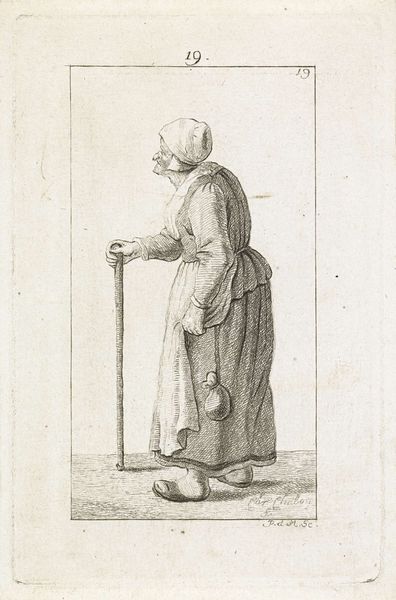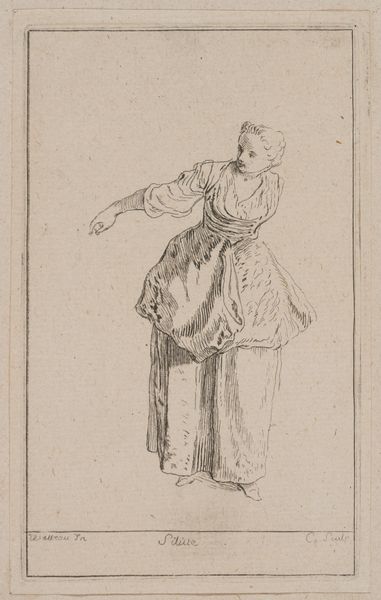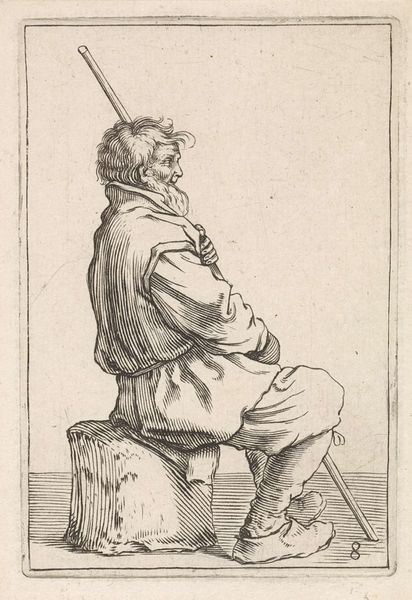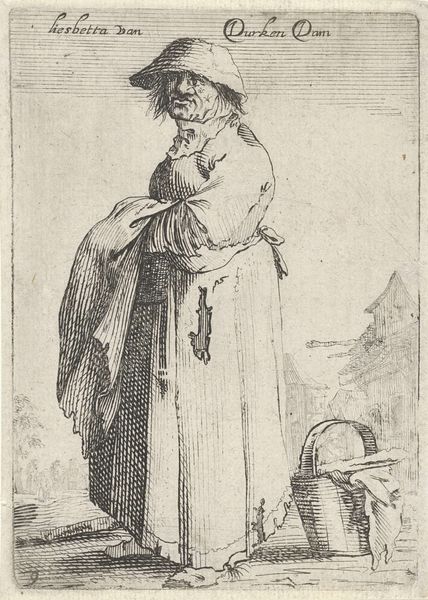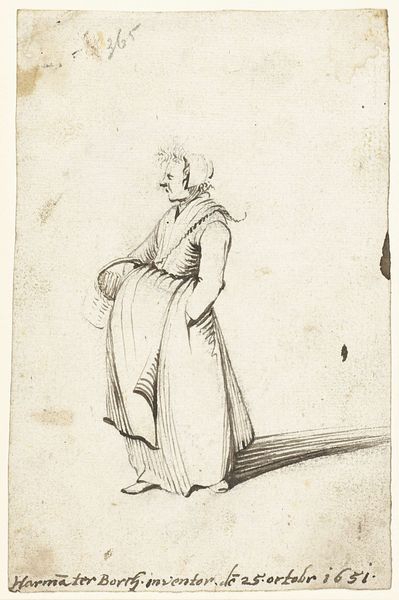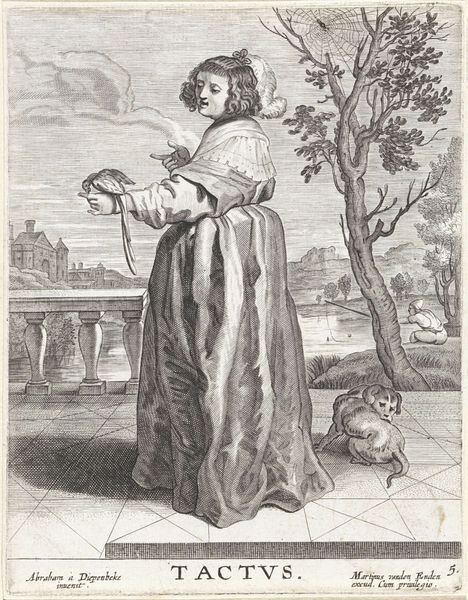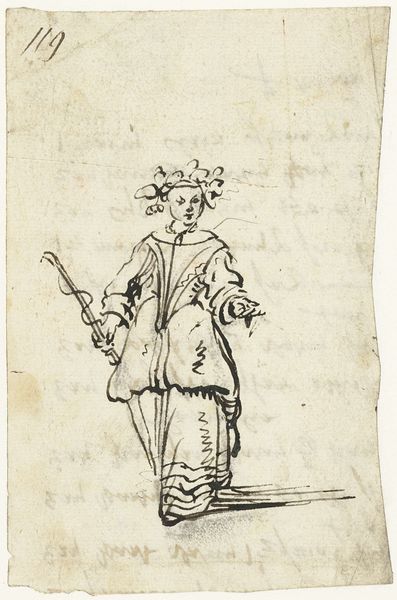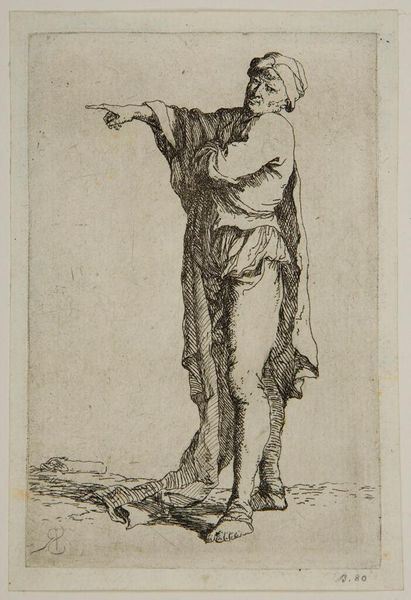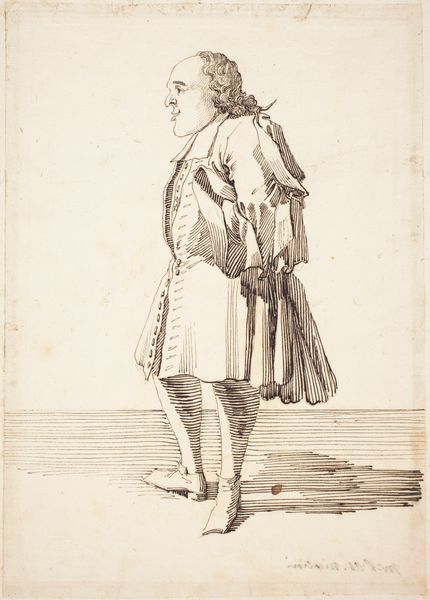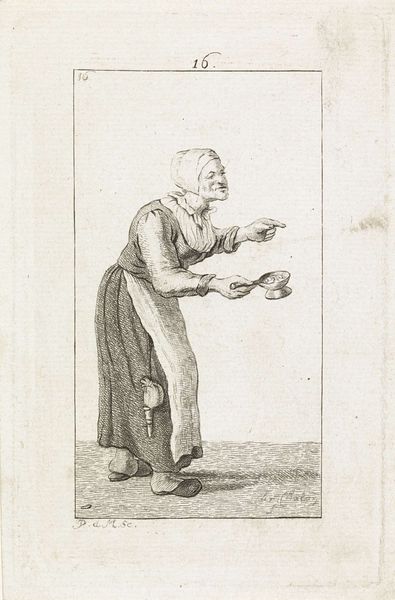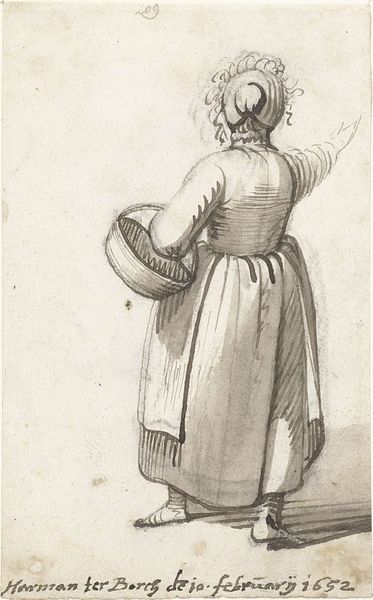
drawing, ink, pen
#
portrait
#
drawing
#
figuration
#
ink
#
pen
#
genre-painting
Dimensions: height 239 mm, width 175 mm
Copyright: Rijks Museum: Open Domain
Curator: This is "Standing Man with Violin and Bow" created in 1866 by David Bles. It's rendered in pen and ink. I'm immediately drawn to its seemingly casual nature. Editor: He has a look of such introspection, almost melancholic. Despite the simplicity of line and color, there’s a depth of feeling. It also brings to mind some difficult questions, in thinking of the cultural status of musical performance in Dutch society at that time. Was he part of a larger musical gathering? Or does the painting signify the individual performer? Curator: The symbols and visual vocabulary connect it directly to that cultural history. Bles uses familiar conventions – the posture, the interior setting with framed artwork on the wall. It's clearly drawing on earlier traditions of representing musicians, both real and imagined. Editor: I see that continuity too. Yet, there’s something undeniably middle-class about this depiction that makes me think of questions around social class. While Bles’ earlier artworks usually contain overtly politically critical elements, this piece speaks to a particular tension of genre painting slowly transforming in the context of a rapidly modernizing world. Curator: I am really intrigued by the ambiguous nature of the staging, he is clearly next to something, it is up to the eye of the beholder whether the staging is for performance or if the space just houses another piece of furniture for the musician's usage. The musician also is depicted next to some kind of looking glass of the time as well as there being an art piece visible in the background of this drawing. The artist definitely included visual elements into the drawing for the keen eye to behold. Editor: It almost serves as a social commentary on performance as labor, highlighting both the artist's labor and his presence within his domain. Thinking of these tensions – and the musical and cultural elements represented – gives me a refreshed way to appreciate the picture’s nuanced position during a transformative moment in Dutch society and also gives a more nuanced portrayal to a changing understanding of the concept of artistry itself. Curator: Indeed. The lasting power of images lies in their ability to both reflect and shape the very worlds they depict. Bles clearly understands the lasting impact that seemingly simple pieces like this leave on the art world. Editor: I agree; revisiting these works invites us to reconsider the relationship between art and historical social identity. Hopefully we are closer to understanding that relation, by virtue of experiencing and observing artworks that continue to offer meaningful interpretations of our shared world.
Comments
No comments
Be the first to comment and join the conversation on the ultimate creative platform.
